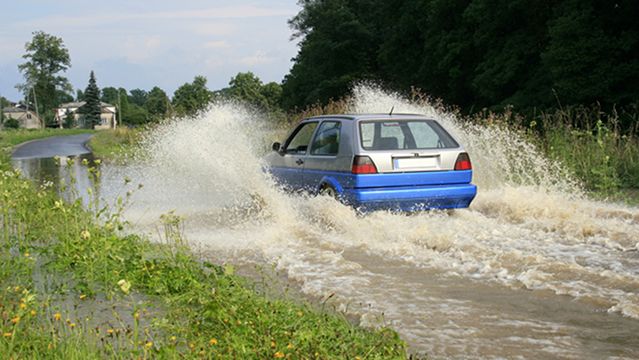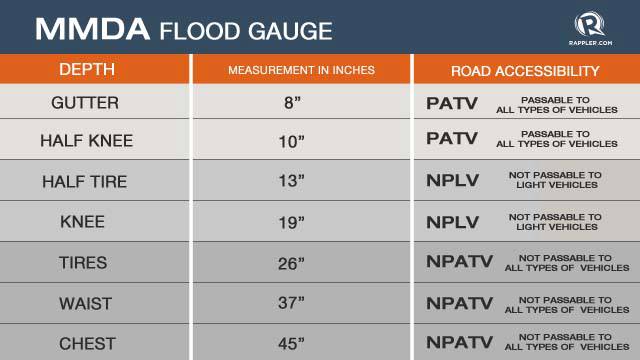SUMMARY
This is AI generated summarization, which may have errors. For context, always refer to the full article.

MANILA, Philippines – Driving during a torrential downpour and through disastrous floodwater has become rather unavoidable during monsoon rains in the Philippines.
Know that doing so can cause great damage to your vehicle.
Rappler asked C! Magazine editor-in-chief and car expert James Deakin what motorists should do to keep their vehicles running fine — and safe — during the season.
1. Pause and assess the floodwater before you proceed
Remember what happened to Christopher Lao? He was driving through a low-lying flooded street when his car floated and got heavily damaged.
James says motorists should always check first how deep the floodwater is and if their vehicle can actually make it through, before making the decision to proceed.
- Be familiar with low-lying areas
- Can you see the exit or the other side?
- Establish the depth based on other vehicles crossing, street signs or people (knee-, waist-, chest- or neck-deep)
- If you cannot see a clear path through it, do not attempt to drive through
- Be aware of debris on the road and in the flood that can puncture your tires
- If you find yourself in need to abandon your vehicle, make sure you are not blocking a driveway or any other vehicle
If the flood starts to cover your headlights, it might be too big of a risk to drive your car through it, says James.
“If the tires are completely submerged, you should retreat. Not only do you risk sucking water into the engine, you also lose traction and can float into other cars [or] walls.”
2. Know how much your vehicle can conquer
Sport Utility Vehicles (SUVs), pick-ups and any vehicle with good ground clearance are James’ recommendations for driving through flood.
“If you cannot afford a Land Rover Defender, the best ones right now are the Chevrolet Colorado, Trailblazer and Ford Ranger with 800mm wading depth,” he says. He adds that most off-roaders like the Honda CR-V and Hyundai Tucson are only good for 400-500mm depth, while cars and lighter vehicles are usually fine at 300mm or less.
Floodwater can damage a vehicle in many ways. James says that aside from damaging the the interiors, floodwater can also cause major damage in your vehicle’s electrical components, particularly the Electrical Control Unit (ECU).
The ECU controls the fuel injection system, ignition system timing and the idle air control system. “The worse thing that can happen is when the air intake sucks in water,” James says. “It enters the cylinders, then the piston tries to compress it, and — boom! — water doesn’t compress.”
Metro Manila Development Authority came up with a flood gauging system:

3. Have an emergency kit in your vehicle at ALL times
Your vehicle should always have an emergency kit with these items:
- Flash light
- Bottled water
- Crackers
- Dry food
- Tow rope (James says this should be handy in case you get stuck or if you need to help people out)
- Alcohol and Betadine (in case you get wounded and need to wade through flood)
- Towel
Motorists should also take note of emergency numbers that can be useful while on the road:
- For medical attention: 16911
- For police assistance: 117
- For towing services (through the Automobile Association of the Philippines): 655-5889
- Emergency roadside service: 723-0808
4. Stay calm and don’t push your car to destruction
If your car’s engine dies while or after driving through flood, James says motorists should NOT try to restart their vehicle.
It should first be pulled out and brought to the dealer for it to be dried out. If the water’s damage is mild enough, you can also try to use a hair dryer on the car’s distributor cap.
If the flood waters have already affected your ECU, it should be replaced. Your interiors should also be steam cleaned at a detailer.
James warns that cars that have ingested water into the air intake and that have been submerged in water for a long time (say, 12 hours) will never run the same way again.
5. Know that fast is not always good
A common misconception about driving through flood is that the driver must go through the flood fast and never let go of the gas pedal.
James says it is unwise to barrel through a flood. Alhough it is important to keep moving, going too fast may cause more damage when floodwater goes over your hood. “Don’t worry about getting water in the tail pipe. That is a myth,” he says.
“The pressure generated out of the tail pipe is far stronger than the pressure trying to get in. It is the air intake you need to protect and the ECU.”
6. Re-route if necessary
James maintains that it is best to avoid flood-prone areas when driving. If you have no other choice, be 200% sure your vehicle can deal with flood.
His practical tip: “When in doubt, stay out.” – With reports from Kai Magsanoc/Rappler.com
Car driving through floodwater photo from Shutterstock
Read other car care tips on Topgear Philippines and CarSavers Philippines.
Add a comment
How does this make you feel?
There are no comments yet. Add your comment to start the conversation.